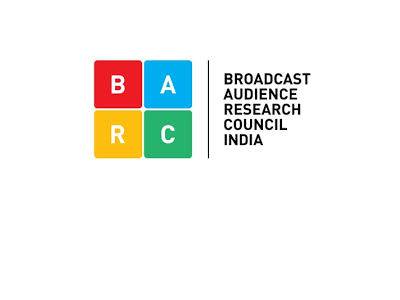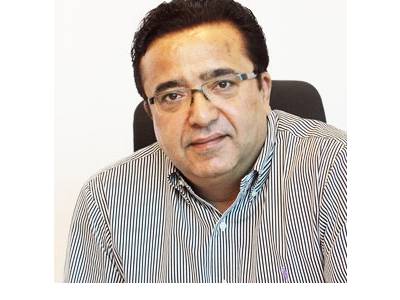TAM: All geared-up for post-DAS era
TAM has come out with DAS (Digital Addressable System) survey and its panel estimates which has estimated the digital penetration in the four metros, Delhi has the highest with 97 per cent followed by Mumbai 93 per cent, Kolkata 70 per cent and Chennai 26 per cent respectively.
TAM did not report the television rating data alongwith industry bodies like IBF, AAAI and ISA. At that time it was felt that the process of digitization would not be smooth. But that has not been the case. From a level of 35 per cent digital penetration in Mumbai, 26 per cent in Delhi, 18 per cent in Kolkata and 12 per cent IN Chennai, the progress post Diwali has been pretty fast and impressive.
the penetration has taken place quite smoothly across SEC A, B, C, D and E. But in Kolkata, while SEC A has touched an almost 96 per cent, SECs B, C, D and E (that represent the lower economic strata) exhibit weak digital penetration.
Says L V Krishnan, CEO, TAM Media, “TAM had suspended reporting of viewership data starting from 7 October (week 41) and ending on 8 December (week 49), as the government implemented the digitisation deadline of 1 November in the four metros. The data for this period would be released on 19 December along with the data for 9-15 December (week 50). The data was not published but digitisation led to a spike in the time spent on television. Niche and smaller channels gained from digitisation.”
There has been a significant increase in the time spent on smaller genres and smaller channels. "We expected this because we had seen some trends from the data that we had observed over the years when we looked at digital homes. But since digital homes were still a small pocket of the overall TV market, we could not ascribe it to imply that it would definitely show in the masses when digitisation happens. In fact, overall time spent did see a growth of almost 5-8 per cent. And the time spent increase occurred on channels across small genres.
Adds Krishnan, “alongwith the change, cable digital has also gone up significantly. Our earlier analysis revealed that digital meant DTH only but today, while DTH has also grown substantially, cable digital has shown double the growth rate of DTH.”
Presently out of Mumbai’s 4.60 million total TV homes, 4.5 million have cable & satellite (C&S) and of this 3.3 million have converted to digital. There is a small shrinkage from the earlier coverage area as there are areas which are not receiving proper signals wherein the TAM panel is around 525 homes. Similar shrinkage in Delhi, is expected at 3 per cent and Kolkata around 10 per cent. Chennai due to low DAS penetration will see no shrinkages. The digitisation in Chennai has remained at 26 per cent as the Madras High Court had initially stayed digitisation in Chennai and will be hearing further arguments on petitions against digitisation in the last week of this month.
TAM will look at homes only within the municipal corporation (MC) and non-MC limits. Further to make the data more representative, TAM will reach 9,350 homes (from the current 8,100) nationally by January-end. Says Krishnan, “we will add 650 more peopleometers in the metros in the SEC-A and -B sample. This will start reflecting by the first quarter of 2013.”
The panels in Mumbai and Delhi will see an additional 400 panels in SEC AB segment. Other centre’s – Bangalore, Kolkata, Hyderabad and Chennai - together will add another 250 homes in SEC AB segment. Says Krishnan, “The concentration on Sec AB is probably because that is the segment the advertisers are interested in. Since the advertisers are looking at the topline, the broadcasters are doing that too, and thus, that is where research is headed.”
There will be difference in the reporting from metro to metro and this is how it will work. For Mumbai, TAM will look at both the MC as well as the non-MC areas. While MC will have complete digital reporting, the non-MC areas will have both analog and digital. Delhi, on the other part, will be 100 per cent digital. With only 30 per cent of Kolkata comprising of MC limits, there will be more analog reporting visible in the city.
Says Krishnan, “from November 1 onwards, TAM data reports will not include any home which is still receiving the analog signal through piracy. The entire panel will only represent digital in the MC areas. Besides, there will also be the terrestrial homes (the non-cable and satellite homes) that will still continue to exist.
An interesting thing that was noticed during the analog-to-digital switch over is that the pressure on communication has also started yielding results in other markets like Punjab, Gujarat and Kerala which are trying to digitize. "The numbers are increasing in those markets and we will see that when we release our update on digitisation across the country in the first week of January," says Krishnan.
“The viewing pattern is gradually changing and the consumers are more inclined towards kids, sports and GEC channels,” says Krishnan. “This will assist newer broadcasters an entry point with digitization spreading out in the country.”
The trends that are noticeable are that viewers are spending more time, an average of 150 minutes a day watching TV. Smaller channels are getting more time, largely because they are becoming available on digital. And kids, movies and sports are doing exceptionally well in the digital universe.
















Share
Facebook
YouTube
Tweet
Twitter
LinkedIn